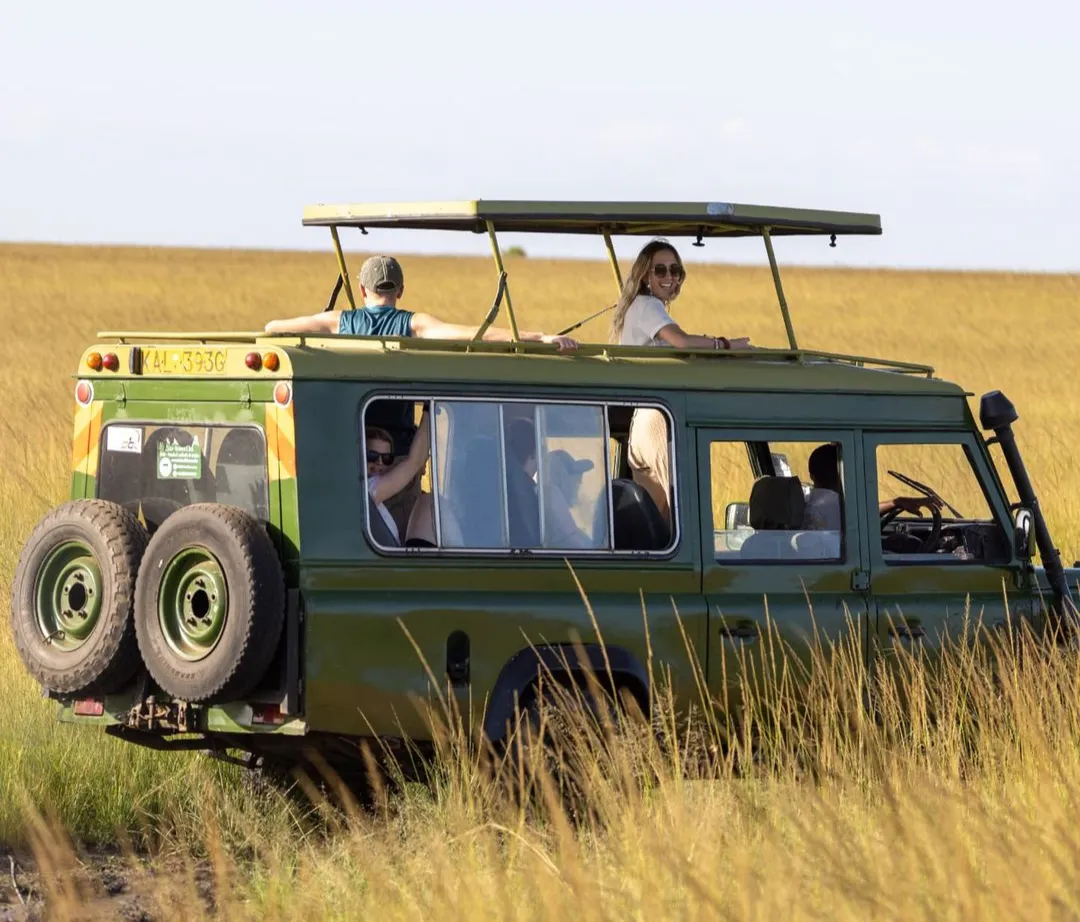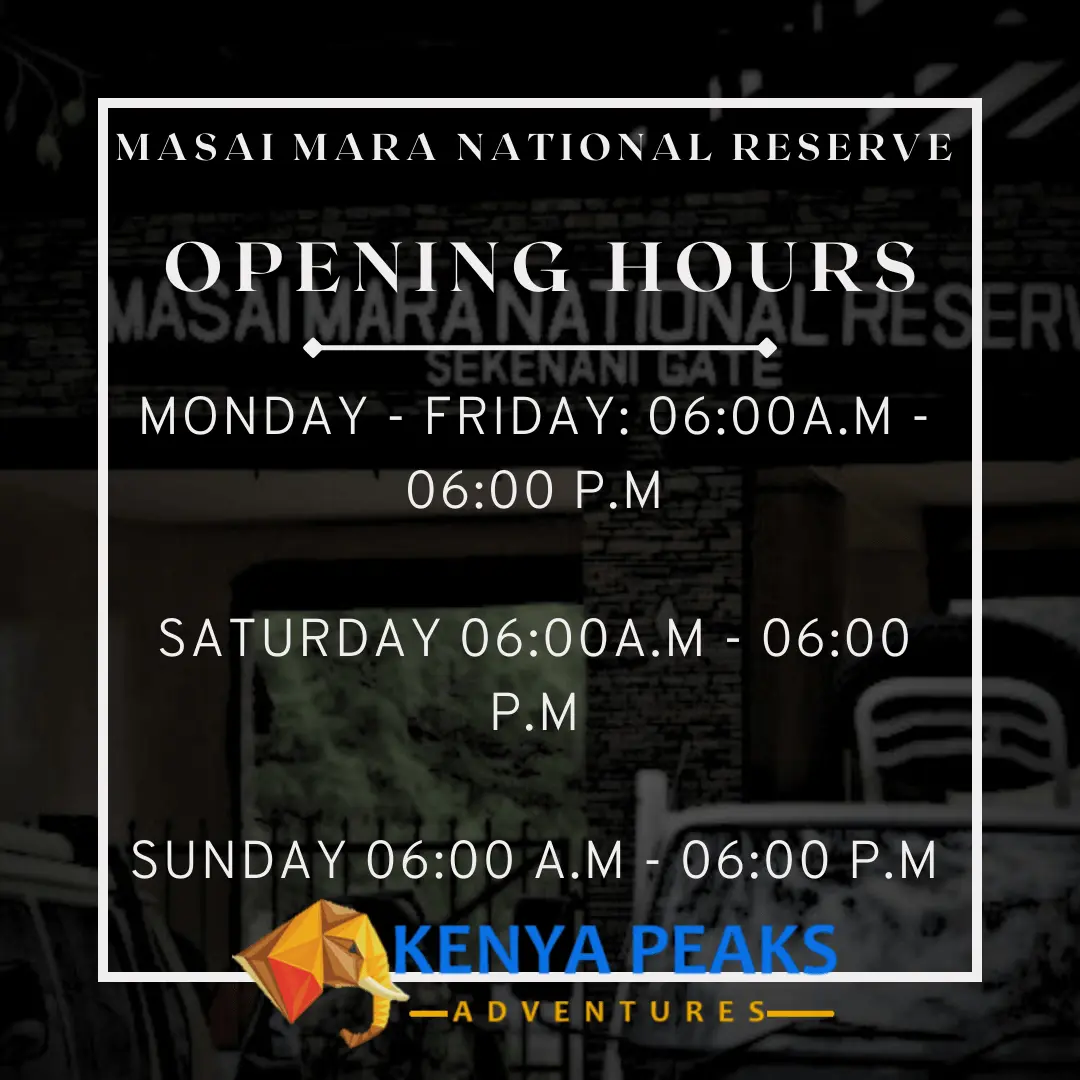
Masai Mara National Reserve Entrance fee is the cost that a visitor pays to enter the reserve. Below is a comprehensive entrance fees for the Masai Mara National Reserve for the years 2024 and 2025.
|
Category |
Non-Residents |
East African Residents |
Kenyan Citizens |
Narok Residents |
|
Adults |
US$200 (From 1st July to December) |
KSH 4,500 |
KSH 3,000 |
KSH 2,000 |
US$100 (From 1st January to 30th June) | ||||
|
Children |
US$50 |
KSH 2,000 |
KSH 1,000 |
KSH 500 (Above 10 years) |
| Free (Under 10 years) | ||||
|
Students |
- |
KSH 2,000 |
KSH 1,000 |
- |
Entrance Fees Breakdown
Non-Residents
Non-residents are visitors who do not reside in Kenya or any of the East African Community member states. This category typically includes international tourists.
|
Season |
Accommodation |
Adults |
Children |
|
High (Jul-Dec) |
Inside/Outside Park |
US$200 |
US$50 |
|
Low (Jan-Jun) |
Inside/Outside Park |
US$100 |
US$50 |
East African Residents
East African residents include individuals residing in any of the East African Community (EAC) member countries. This includes residents of Kenya, Uganda, Tanzania, Rwanda, Burundi, and South Sudan.
|
Category |
Adults |
Children |
Students |
|
Fees |
KSH 4,500 |
KSH 2,000 |
KSH 2,000 |
Kenyan Citizens
Kenyan citizens are individuals holding Kenyan nationality, offering them favorable rates as part of efforts to encourage local tourism.
|
Category |
Adults |
Children |
Students |
|
Fees |
KSH 3,000 |
KSH 1,000 |
KSH 1,000 |
Narok Residents
Narok residents are those who live in Narok County, the region where the Masai Mara is situated. This fee category acknowledges the local community's relationship with the reserve.
|
Category |
Adults |
Children (Above 10 years) |
Children (Under 10 years) |
|
Fees |
KSH 2,000 |
KSH 500 |
Free |
Vehicle Entry Fees
The vehicle entry fee at Masai Mara NR is structured based on the type and capacity of the vehicle, ensuring fair pricing for different groups and purposes.
Safari Vehicles
Safari vehicles are specifically designed for wildlife viewing and often have features like pop-up roofs. Fees vary according to the seating capacity.
|
Seating Capacity |
Fee (KSH) |
|
Less Than 6 Seats |
500 |
|
6 – 12 Seats |
1,000 |
|
13 – 24 Seats |
3,000 |
|
24 – 44 Seats |
4,000 |
|
45 Seats and Above |
5,000 |
Trucks
Trucks are larger vehicles often used for carrying supplies into the park, but sometimes they are also used for larger tour groups.
|
Weight of the Truck |
Fee (KSH) |
|
1 – 3 Tons |
700 |
|
4 – 7 Tons |
2,500 |
|
8 Tons and Above |
3,500 |
Ranger Fees and Activities
Ranger services provide added security and a more enriching experience through guided tours and expert insights. Here's a breakdown of the ranger fees based on different activities:
Game Drives
Game drives are vehicle-based tours aimed at observing wildlife in their natural habitats. Fee for a ranger for game drive will vary depending on the duration of the drive.
|
Activity |
Duration |
Fee (KSH) |
|
Game Drive (+6hrs) |
Over 6 hours |
3,000 |
|
Game Drive (-6hrs) |
Under 6 hours |
1,500 |
Full Night Camp Security
For visitors opting to stay overnight in the park, full night camp security services are available, providing protection and peace of mind.
|
Activity |
Fee (KSH) |
|
Full Night Camp |
4,000 |
Ranger services not only enhance safety but also contribute to the conservation efforts, as these fees help fund wildlife protection initiatives.
Additional Activity Fees
The Masai Mara offers more than just game drives; it provides various unique activities that allow visitors to experience the reserve in diverse and exciting ways. Below are the fees for these additional activities, which cater to different interests and provide unique perspectives of the Mara.
Hot Air Balloon Rides
Hot air balloon rides offer a bird's-eye view of the expansive Masai Mara, allowing for unique wildlife spotting and breathtaking sunrise views. Note that the landing fee is usually included in the overall flight cost.
|
Category |
Adult |
Child |
|
Hot Air Balloon Landing Fee |
US$ 50 |
US$ 20 |
Horse Riding
Horseback safaris provide an up-close and personal experience with the Mara's landscape and wildlife, suitable for visitors looking for an adventurous way to tour the park.
|
Activity |
Fee (KSH) |
|
Horse Riding (Per Day) |
1,500 |
Annual Research Permits
Annual permits are available for researchers interested in studying the diverse ecosystems and wildlife populations of the Masai Mara.
|
Permit Type |
Fee (US$) |
|
Annual Research Permit (Non-Resident) |
400 |
Camping Fees
Camping in the Masai Mara offers visitors a chance to connect with nature and experience the reserve in an intimate and immersive manner. There are options for both public and private campsites, with different fee structures for non-residents, East African residents, and Kenyan citizens.
Public vs. Private Campsites
Public campsites are shared facilities that can accommodate multiple groups, offering basic amenities. Private campsites provide a more secluded and exclusive camping experience.
|
Camping Option |
Category |
Non-Resident |
East African Resident |
East African Citizen |
|
Public Campsite |
Adult |
US$ 30 |
KES 1,000 |
KES 1,000 |
| Child | US$ 20 | KES. 200 | KES. 200 | |
| Student | US$ 20 | KES. 200 | KEs. 200 | |
|
Private Campsite |
Adult |
US$ 40 |
KES 1,500 |
KES 1,000 |
| Child | USD 20 | KES. 500 | KES. 200 | |
| Student | USD 20 | KEs. 500 | KES. 200 |
Note: Private campsite bookings may include additional fees such as a booking fee, particularly at popular campsites like Ndovu, Dirisha, Kijito, Kishanga, and Kiboko, among others.
Aircraft Landing Fees
For visitors opting to fly directly into the Masai Mara, understanding the aircraft landing fees is essential. These fees vary based on the aircraft's seating capacity, ensuring that operators are charged appropriately for the use of airstrip facilities.
Aircraft Landing Fees Based on Seating Capacity
These fees apply to any aircraft landing at airstrips within the Masai Mara reserve, typically catering to tourists who prefer to avoid the long drive from Nairobi or other parts of Kenya.
|
Seating Capacity |
Fee (US$) |
|
1-3 seats |
20 |
|
4-12 seats |
50 |
|
13-20 seats |
100 |
|
21 seats and above |
150 |
These fees are crucial for maintaining the airstrips and ensuring that they are safe and operational for all visitors choosing this method of arrival.
